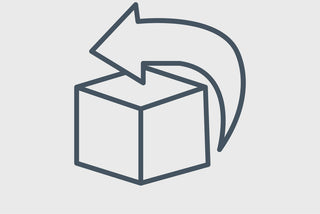By Dan Fryda
Seaweed! One wonders why so important and vital a family of plants should be referred to as a ‘weed.’ We think of weeds as nuisance; something to be eradicated like green vermin. But once we are aware of the many fabulous properties of these marine plants, we might want to refer to them as Sea Herbs and Sea Vegetables. There are more than 30,000 species of marine algae ranging in size from microscopic plankton to the giant kelp beds in the Pacific that grow to a size of 60 metres. Below is a list of 10 therapeutic extracts (or properties) that you may not be aware of.
-
DNA Repairing Enzymes: Extracted from marine plankton have been shown to repair DNA following damage due to excess sun (ultra-violet) exposure. The stress caused by overexposure to the sun results in your skin’s DNA molecules to get out of alignment. Topical application of a cream with plankton enzymes play the role of a molecular chiropractor by re-aligning DNA molecules within 2-4 hours. Research at Heinrich Heine University in Germany suggests that marine plankton may play a role in the prevention of skin cancer.
-
Dermal Rejuvenation: L-Fucose (a form of fucoidan) is a polysaccharide that helps to strengthen the connective tissue matrix of support of your skin. Topical application of seaweed extracts containing this power-polysaccharide was shown to help thicken the skin’s dermis with the result that the appearance of wrinkles was diminished due to the uplifting effect.
-
Building Blocks of Life: Seawater is known to have all of the elements of life and has been compared to blood plasma, lymph and the fluids that make up 70% of the human body. Marine plants which obtain their nutrients from seawater, are concentrated storehouses of all of the elements found in the sea. As the base of the food chain, marine plants deliver all of the sea’s nutrients to our skin to support and accelerate cellular regeneration. In fact a bath in seaweed will deliver vital elements such as magnesium, potassium, iodine, copper and zinc essential in the synthesis of collagen and other skin fibers.
-
Marine Polysaccharides from seaweed are natural moisturizers that help leave skin smooth and firm to the touch. These saccharides reduce inflammation and lock in moisture.
-
Arctic Peptides for Skin Firming: Extracted from Irish Moss, these peptides are harvested north of the Arctic Circle off the coast of Greenland. Due to the harsh climate of the frozen seas, these seaweeds adapted by creating special peptides from arginine and taurine. Applied to the skin, they act as messengers to stimulate collagen synthesis.
-
Anti-inflammation: Environmental aging factors such as stress, pollution and poor diet create an inflammatory response responsible for advanced aging. Marine algae contain the most powerful anti-inflammatory agents in the form of astaxanthin and omega fatty acids (3,6 & 7) that reduce skin redness and calm skin irritations. These are essential in the treatment of rosacea, eczema and dermatitis.
-
DNA Defense: Seaweed is also the richest source of antioxidants. When applied to the skin, they offer us an Eco-Protective Shield against environmental aging factors. Marine algae contain the full range of carotenoids from beta-carotene, lycopene and lutein to astaxanthin, zeaxanthin and polyphenols.
-
Body Contouring: The giant kelp found in the North Atlantic hold the secret to slimming due to the strong presence of iodine and fucoxanthin. Both of these agents taken orally help to regulate sluggish metabolism to burn unwanted fat. When bathing in seaweed, the concentration of these slimming elements penetrate the skin to reduce the appearance of cellulite and add definition to the joints of your legs.
-
Detoxification: Calcium and magnesium found in seaweed are useful in helping the body rid itself of toxins. Seaweed body wraps are known to stimulate the return circulation (lymph system) to rid the body of metabolites responsible for water retention, cellulite, and a host of degenerative age-related conditions.
-
Hormonal Balancing: Did you know that iodine not only helps to normalize metabolism, but it is also essential to the female reproductive organs to balance estrogen. As estrogen imbalances are suspected to be a major factor in breast and reproductive cancers, treatments rich in pure iodine-rich seaweed complemented with dietary supplementation of seaweed may help prevent the onset of these destructive diseases. For more information, see the research conducted by the Iodine Project let by former UCLA professor Abraham.
These are but a few of the miraculous properties of these marine plants. In an age when we are more and more alienated from nature, seaweed helps us to reconnect with the very source of life itself (the vast ocean surrounding our planet) to restore and replenish the ocean within our bodies.
Marine algae have many other properties you may wish to learn more about. They play a role nutrition, agriculture, pharmaceuticals and medicine. We can truly no longer ignore this family of plants and the gifts they give us.
-
All seaweed that we use is food grade. That means that the EU and Canada test the waters where the seaweed is harvested. All of the areas where it is are far away from rivers or estuaries that may be vehicles for pollutants. Far from disturbing the eco-systems, most of the seaweed in Asia is harvested using ‘long line of rope’ which are placed in the ocean. There, red algae such as agar agar, porphyra (Nori), palmaria, gracilaria, etc….are planted on a string and the algae grow cylindrically around the rope over a range of several miles. When it comes time to harvest, the harvesters merely pull in the rope in much the way that one would pull in a clothesline….hardly disruptive at all.
-
Some of the algae we use is farmed…..especially micro algae. We obtain extracts of omega 7 and omega 3 fatty acids from Nannochloropsis algae and astaxanthin from Haematoccus algae. Additionally we use chlorella and Spirulina which is farmed under controlled conditions.
-
World production of seaweed totals 10 million metric tons annually with China in the lead responsible for 5 million tons, Japan 800,000 tons, South Korea 600,000 tons, the US about 100,000 tons, France about 100,000 tons, etc. Now the venues where we get our seaweed is from the islands off the Brittany coast….the Ouessant Isles and the Isle of Batz. The Isle of Batz alone contains 10 million metric tons of algae by itself….equal to the world production. The world biomass of seaweed would be measured in the trillions upon trillions of tons. As mentioned before, the harvest is regulated.
-
About 90% of the seaweed harvested is for industrial uses ranging from textiles (all of your cotton, woolen and linen shirts and other apparel are laminated with Laminaria algae for extra resilience); wood pulp is laminated with Laminaria to create paper; photographic papers and film as well as the paint on the wall which would chip off without Laminaria. The rest of the algae harvested is for the food, pharmaceutical and cosmetic industries.
So the answer is mixed. Some algae are harvested in the wild by fishermen or ‘goemoniers as they are called in France; others reeled in along strings while much is cultivated in farms.






